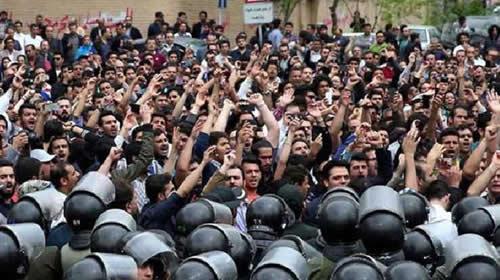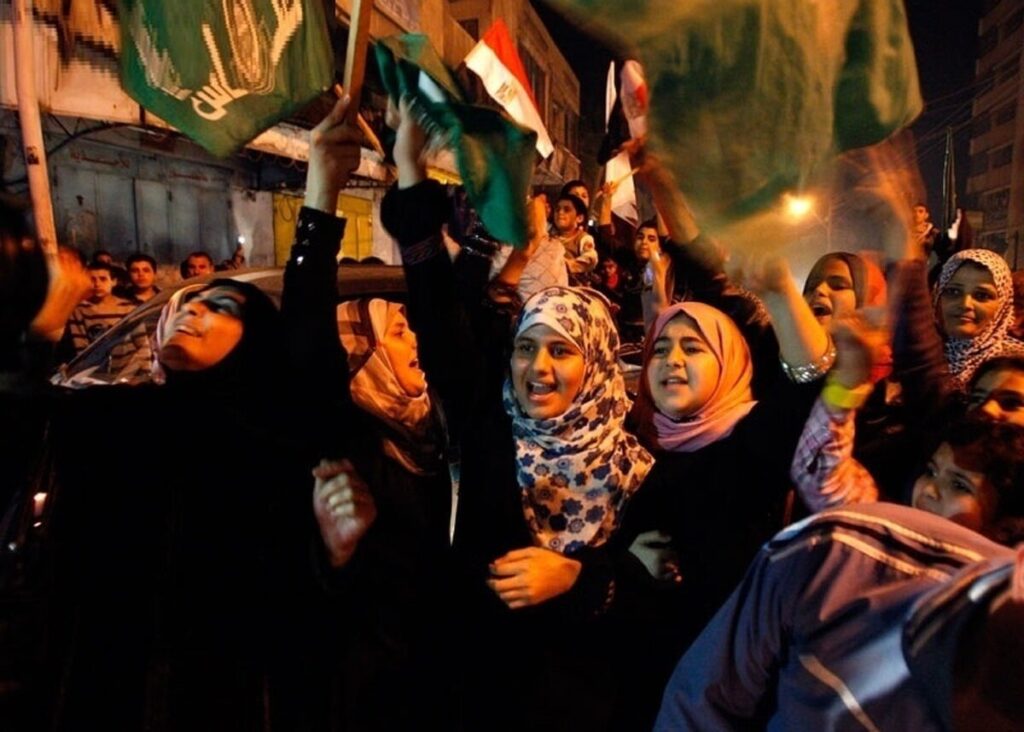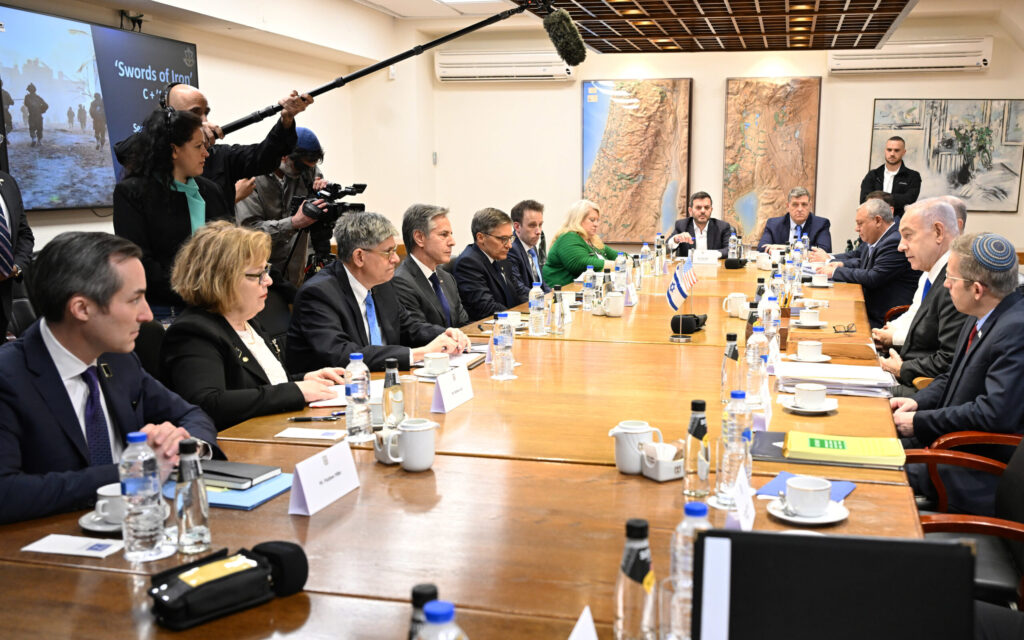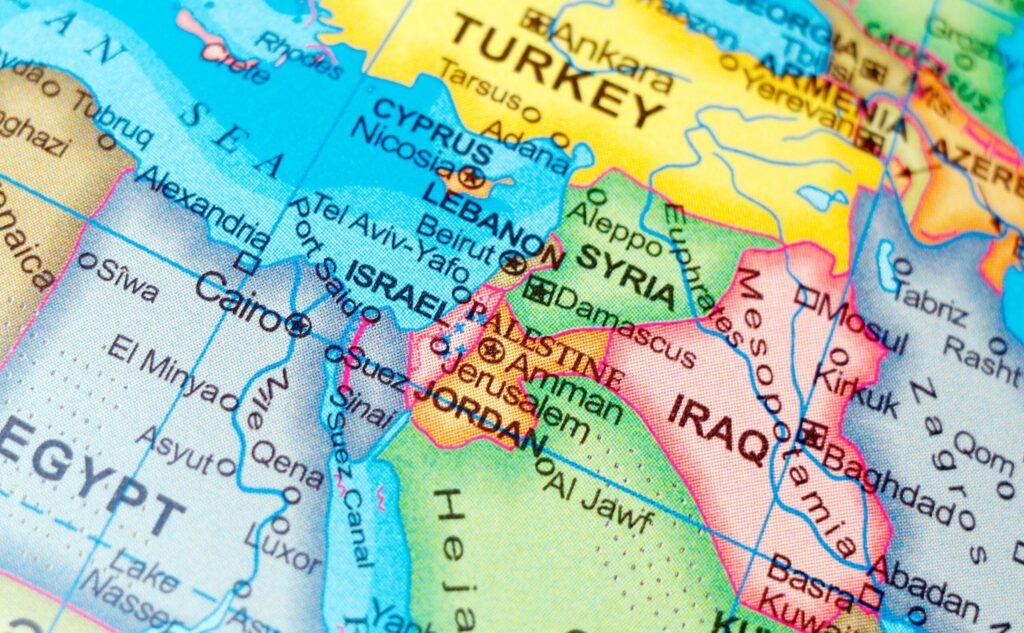Article 2
Rouhani’s Protest Paradox
Maj. Omer Carmi, IDF
Washington Institute, January 8, 2018
During his 2017 reelection campaign, Hassan Rouhani portrayed himself as Iran’s best hope for economic recovery, sporting slogans such as “Freedom, Security, Peace, and Progress” while promising to promote “justice and reforms.” Rouhani even attacked the Islamic Revolutionary Guard Corps (IRGC), claiming that improvements could only be achieved if “groups with security and political backing” refrained from interfering in the economy.
Yet President Rouhani’s actions since then suggest that he is not keeping his campaign promises. Over the past few months, he has softened his tone on the IRGC, failed to appoint female ministers to his cabinet, and selected controversial figure Mansour Gholami, a former university president who has relations with the conservative camp, as minister of science—a post highly valued by reformists because it supervises the country’s universities. As a result, Rouhani has suffered harsh criticism from prominent reformist figures for “shifting to the right” of the political map.
The current demonstrations therefore represent an acute challenge for Rouhani. Some of the protestors have chanted slogans directly against him, even calling for his death. More generally, they have centered their demonstrations around corruption and poverty—two issues that Rouhani promised to alleviate during his campaign.
ROUHANI’S RESPONSE TO PAST PROTESTS
In summer 1999, the Iranian regime faced widespread protests following the closure of a reformist newspaper that had criticized the leadership on human rights issues. The demonstrators were mostly middle-class students with a reformist orientation, and their efforts to highlight the lack of basic freedoms in Iran included chanting slogans against Supreme Leader Ali Khamenei. The regime responded harshly, killing six students and detaining more than a thousand in only six days.
At the time, Rouhani was secretary of the Supreme National Security Council, a major player in Iran’s security establishment, so he presumably took part in the decisionmaking process leading to the crackdown. On the day the protests ended, he addressed a pro-regime gathering and accused the demonstrators of serving a “foreign plot” aimed at toppling the regime. In his words, “The enemy launched an onslaught on the foundation stone of the Revolution’s patriarchal structure…and attacked the sacred sanctity of velayat-e faqih [referring to the doctrine granting the Supreme Leader his all-encompassing authority].” He then claimed that offending this principle was equal to “offending the entire nation,” and warned that arrested rioters would be tried for being “enemies of the state” and “corrupt on earth”—crimes punishable by death. According to some reports, Rouhani later explained that he could not have done anything else because he was in the government at the time.
In other instances during his years on the council, Rouhani placed gag orders on reformist newspapers and took various measures to limit public criticism of the regime. When asked about such policies in 2002, he argued that there is a difference between “freedom” and “shambles,” emphasizing that all Iranians must follow the law. He repeated the same logic years later when asked why he remained silent during the Green Movement, arguing that those demonstrators were obligated to act within the limits of the law and calling the movement “seditious” in 2011.
SITTING ON THE FENCE SO FAR
Since the latest protests broke out, Rouhani seems to be following the regime’s talking points. In a recorded speech on December 31, he argued that “the people are completely free to criticize and express their protests,” but only in a way that “would lead to the betterment of public life and the country’s situation.” He went on to reiterate his basic “law and order” mindset by arguing that criticism is “different from violence,” and that disaffected Iranians should find a “correct, legal, and logical way” to voice their criticism. Otherwise, he said, the protests will be “false” and “please the enemies.”
Rouhani’s advisors followed in his footsteps by suggesting the prospect of reforms while warning against any attempt to destabilize Iran. One advisor, Hesamodin Ashna, published a Twitter poll asking the public if they were willing to cease the protests in return for a new plan of action to meet their demands (despite the obvious unreliability of online polls, it bears mentioning that nearly 60 percent of 17,500 voters said no). And senior advisor Akbar Torkan noted that although the government should indeed take steps to combat corruption, the United States and Israel were eager “to take advantage of the protests.”
Such rhetoric might work for Rouhani in the short term, particularly if the protests decline. But if they persist or intensify, or if the regime adopts a harsher response, he will be forced to face a dilemma. On the one hand, he is the president of Iran and therefore cautious not to make any moves that might shake the foundations of its government. After all, he has been an integral part of the Islamic Republic since the days of Ayatollah Ruhollah Khomeini, serving as an air force commander, deputy speaker of parliament, and numerous other key roles. Above all, he seeks to preserve the core concepts and goals of the Islamic Republic, even though he sometimes takes a more pragmatic path toward doing so than others in the regime.
On the other hand, Rouhani was elected under the promise of moderation, reform, human rights, and, most important, economic recovery. The current dissent in the streets erupted in large part because of his inability to address the latter promise—in fact, some would argue that the high expectations he and his advisors have encouraged since the nuclear deal contributed to the public’s deep disappointment. Accordingly, if the regime cracks down forcefully and he cooperates, he would likely lose some support even among his core constituents.
EMPHASIZING THE TRADE-OFF ROUHANI FACES
Although the Supreme Leader remains Iran’s ultimate decisionmaker, Rouhani can still use his limited influence to affect Khamenei’s calculus—especially if his messages are echoed by the Iranian public, as seemed to happen with the nuclear issue. No matter how the protests turn out, they will serve as a wakeup call for the president. Going forward, he may finally realize that the economy is in need of urgent recovery, and that failure to achieve that goal will spur a new wave of protests, likely more intense than the current round. To begin this recovery, he may decide to make tough decisions on economic reforms that will hurt major actors in the Iranian system.
Rouhani might also seek to jumpstart the economy by attracting more foreign companies and investments to Iran. Yet this would require him to understand that there is a tradeoff between Iran’s destabilizing activities in the Middle East and its desire for economic improvement. The international community could foster this state of mind by emphasizing to him—in public and private—that many businesses will remain gun-shy about engaging with Tehran as long as it continues its malign behavior abroad and its development of ballistic missiles. Amid the chants of angry protestors, such a message might resound more clearly in the halls of Rouhani’s presidential residence than ever before.
Of course, Khamenei may still reject any pleas from Rouhani about foreign adventurism and missiles. The Supreme Leader is a fierce hardliner who believes in the concept of “exporting the revolution,” so even if he is persuaded to allow economic reforms (a move whose major effects would only be felt in the long run, not in the short term), he will be reluctant to decrease support for Iran’s network of proxies abroad. In that case, foreign pressure could help convince Rouhani that he should use his limited presidential tools to impede certain IRGC activities in the region. These tools include decreasing defense budget allocations, using his control over the Defense Ministry to hinder cooperation with the IRGC, and stepping up his occasional public criticism of the IRGC. This approach might not completely change Iran’s behavior in the region, but it could challenge some of the plans that leaders of the IRGC-Qods Force likely have for the Middle East.
Omer Carmi, a former visiting military fellow at The Washington Institute, has led analytical and research efforts in the Israel Defense Forces pertaining to Middle East and national security issues.
BACK TO TOP
|












